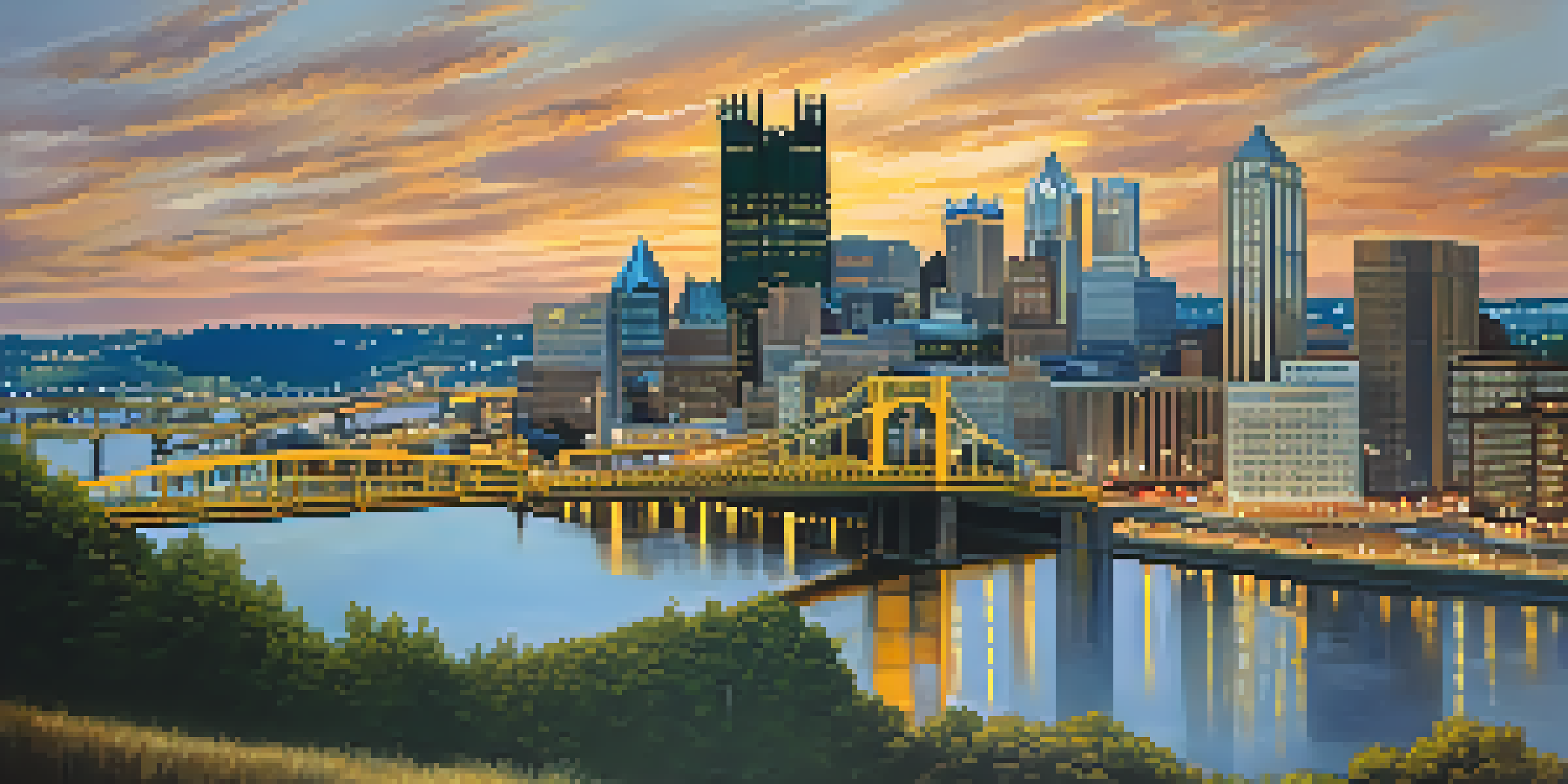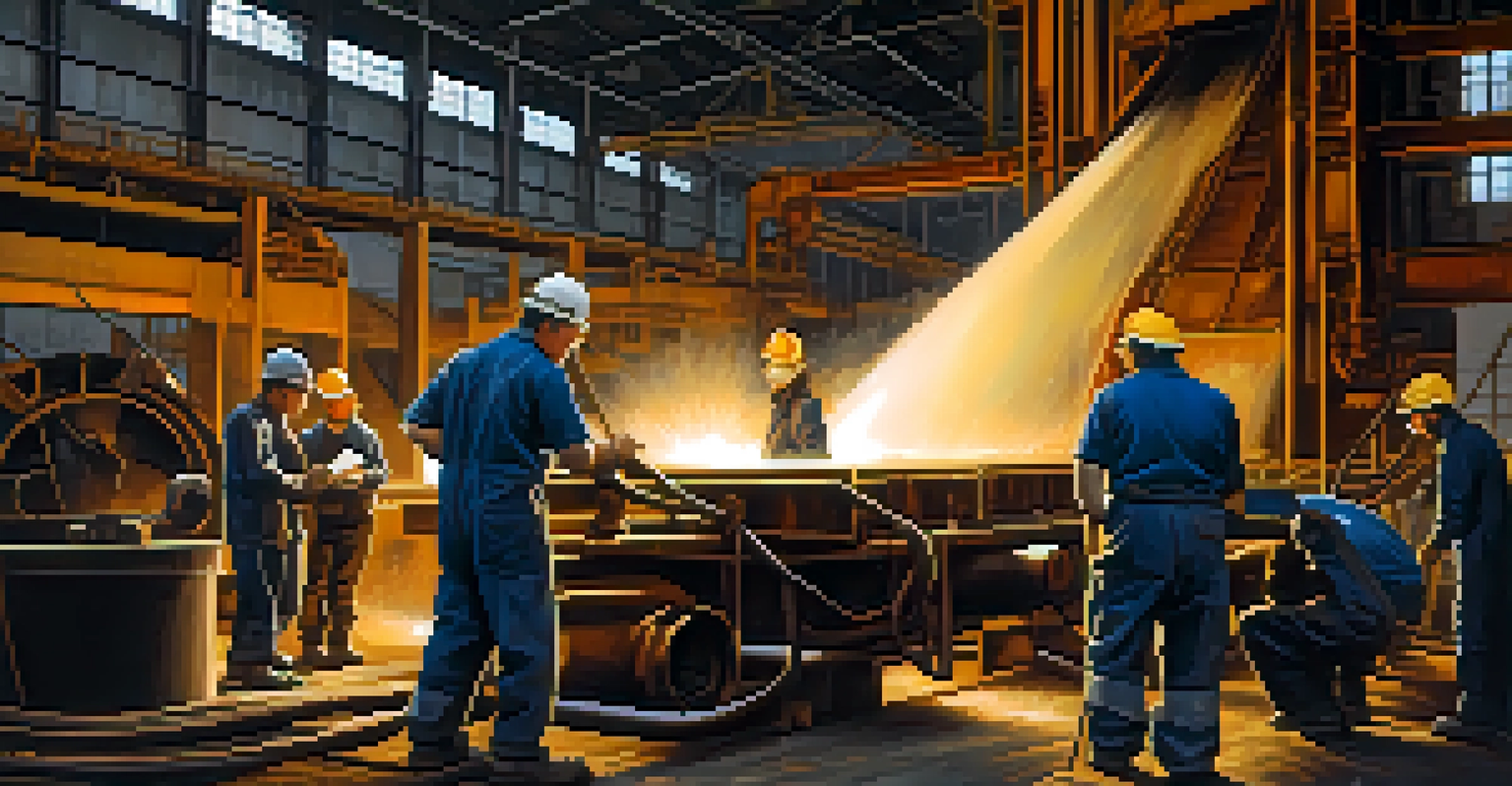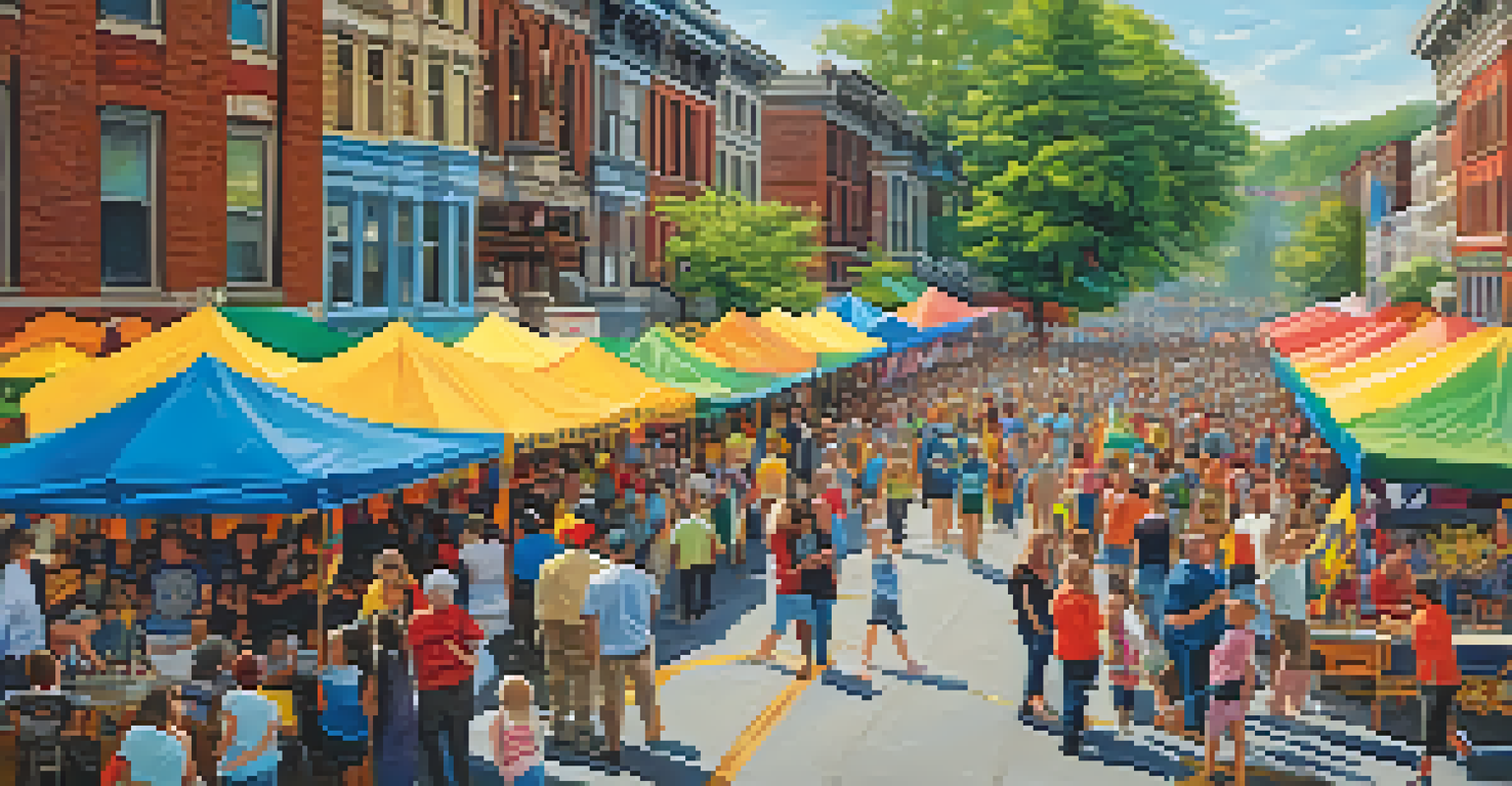Cultural Impact of Steel: Pittsburgh's Identity Shaped by Industry

The Birth of Steel Town: Pittsburgh's Industrial Revolution
In the late 19th century, Pittsburgh emerged as a powerhouse of steel production, thanks to the influx of immigrants and innovative technologies. The city's strategic location along the rivers made it an ideal hub for transporting raw materials and finished products. This industrial boom transformed Pittsburgh from a sleepy town into a bustling metropolis, attracting workers seeking jobs and opportunities.
Pittsburgh is a city of resilience, where the spirit of its steelworkers lives on in the heart of its people.
The steel industry not only fueled economic growth but also fundamentally altered the city’s social fabric. Families from diverse backgrounds came together, creating a melting pot of cultures, traditions, and languages. This rich tapestry of influences laid the groundwork for Pittsburgh’s unique identity, which continues to thrive today.
As steel production flourished, so did the community spirit among workers. Labor unions formed, advocating for fair wages and better working conditions. Events like strikes and parades became common, showcasing the camaraderie among workers and solidifying a sense of belonging that would shape Pittsburgh's cultural landscape for generations.
Cultural Institutions: The Legacy of Steel in Arts and Heritage
The influence of the steel industry extends beyond economics; it also permeates Pittsburgh’s cultural institutions. Museums, theaters, and art galleries reflect the city’s industrial heritage, often showcasing works that celebrate the lives of steelworkers and their families. For instance, the Carnegie Museum of Art features collections that highlight the intersection of industry and artistry.

Additionally, the city's vibrant music scene emerged partly from the sounds of industry, with genres like jazz and folk capturing the essence of Pittsburgh's blue-collar roots. Festivals celebrating music and art often pay homage to the steel industry, reminding residents and visitors alike of the city’s rich history.
Steel Transformed Pittsburgh's Identity
The steel industry shaped Pittsburgh's social fabric, creating a diverse community and a strong sense of belonging among workers.
Moreover, local narratives and folklore surrounding the steel industry have inspired countless artists and writers, enriching Pittsburgh's cultural tapestry. These stories are not just relics of the past; they continue to inspire new generations, ensuring that the legacy of steel remains a vital part of Pittsburgh's identity.
Architecture and Urban Development: Steel's Physical Mark
Pittsburgh's skyline is a testament to the steel industry's impact on urban development. Iconic structures, such as the PPG Place and the U.S. Steel Tower, showcase the architectural possibilities that steel brought to the city. These buildings are not just functional; they are symbols of progress and resilience, capturing the spirit of a city forged in steel.
The history of Pittsburgh is a story of transformation, where steel once forged industry, now shapes culture and community.
The industry also influenced the design of residential neighborhoods, where sturdy steel homes were built to withstand the test of time. Many of these structures have become beloved landmarks, reminding residents of their industrial past while providing a sense of stability and continuity.
However, the decline of the steel industry in the late 20th century prompted a shift in urban planning and development. As old factories were repurposed into lofts and businesses, Pittsburgh began to redefine itself, blending its industrial heritage with modern innovation.
Pittsburgh's Sports Culture: Steel City Pride
Pittsburgh's identity is also deeply intertwined with its sports culture, with teams like the Steelers and Penguins embodying the city's blue-collar spirit. The passion for sports in Pittsburgh reflects the resilience and determination that defined the steel industry, creating a sense of unity among residents. Game days often turn into communal celebrations, where fans gather to cheer on their teams, fostering camaraderie and pride.
The nickname 'Steel City' resonates in the sports arena, as players and fans alike embrace the grit and work ethic associated with steelworkers. This connection is especially evident during championship runs, where the city rallies together, echoing the unity forged in the factories.
Cultural Legacy of Steel Lives On
Pittsburgh's cultural institutions and sports culture reflect the enduring influence of the steel industry, celebrating its history and fostering unity.
Moreover, local sports legends often share their stories of hard work and determination, inspiring the next generation of athletes. This cultural connection to sports serves as a reminder of Pittsburgh's roots while propelling the city into a future filled with hope and potential.
Education and Workforce Development: A Legacy of Learning
The steel industry has played a pivotal role in shaping Pittsburgh's educational landscape, with a focus on workforce development tailored to meet the demands of a changing economy. Institutions like Carnegie Mellon University and the University of Pittsburgh have evolved to offer programs that equip students with relevant skills, ensuring they are prepared for the workforce of tomorrow.
Vocational schools and training programs also emerged, offering opportunities for individuals to gain hands-on experience in trades essential to the steel industry. This emphasis on education reflects a commitment to maintaining a skilled workforce, which is vital for both the local economy and the community's long-term prosperity.
As the city transitions to a more diversified economy, the educational initiatives rooted in its steel heritage continue to flourish. By fostering a culture of lifelong learning, Pittsburgh honors its past while paving the way for a brighter, more innovative future.
Environmental Changes: Steel's Impact on Nature
The steel industry has left a significant mark on Pittsburgh's environment, both positive and negative. Historically, steel production contributed to pollution and environmental degradation, leading to health concerns among residents. However, in recent years, the city has made strides in addressing these issues, focusing on sustainability and revitalization of green spaces.
Efforts to clean up the rivers and reduce emissions have transformed Pittsburgh into a model for industrial cities worldwide. Initiatives like the Three Rivers Park and the transformation of former steel sites into green parks highlight the city’s commitment to restoring its natural beauty.
Resilience and Innovation in Change
Pittsburgh's journey from an industrial powerhouse to a diversified economy showcases the community's resilience and commitment to a sustainable future.
This shift towards environmental consciousness reflects a broader cultural change in Pittsburgh, where residents take pride in their city’s recovery and embrace the idea of sustainability. By balancing industrial heritage with ecological responsibility, Pittsburgh is crafting a new identity that honors both its past and future.
Community Resilience: The Spirit of Steel Lives On
Pittsburgh's journey through the highs and lows of the steel industry has fostered a spirit of resilience among its residents. The challenges faced during economic downturns have only strengthened the community's bonds, with neighbors supporting one another in times of need. This sense of solidarity is a defining characteristic of Pittsburgh's identity, echoing the camaraderie found in the steel mills.
Local initiatives and grassroots movements have emerged, showcasing the community's commitment to revitalizing the city. From small businesses to art collectives, residents are actively involved in shaping Pittsburgh’s future, drawing inspiration from their industrial roots.

Ultimately, it is this resilience that ensures the legacy of steel will endure. Pittsburgh has transformed its challenges into opportunities, creating a vibrant community that honors its past while looking forward to a brighter future.